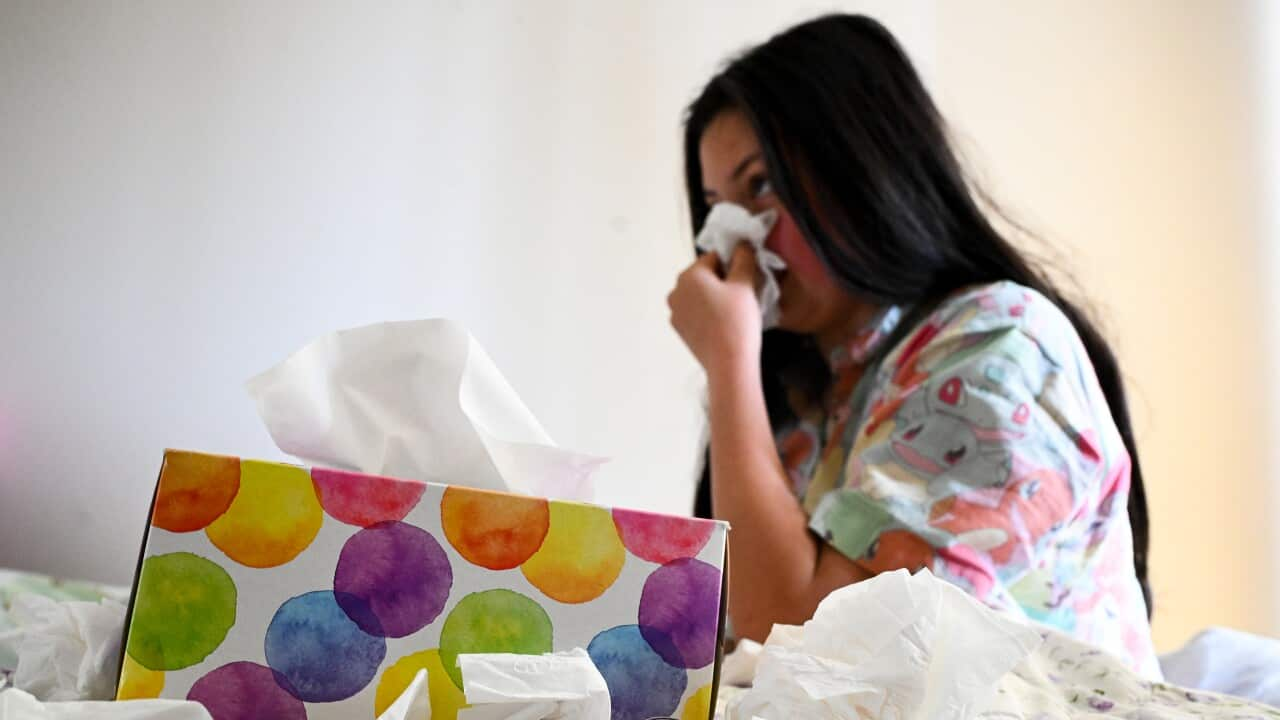A "record-breaking" flu season has left medical experts worried about Australia's vaccination rates, with GPs warning declining figures should serve as a "wake-up call".
More than 410,000 lab-confirmed cases have been reported so far in 2025 across the country, eclipsing the previous record of 365,000 last year, according to the Royal Australian College of GPs (RACGP).
"This is not a record we want to be breaking," said RACGP president Michael Wright, urging Australia to boost vaccination rates.
How bad is 2025 for flu cases?
The RACGP described 2025 as "the worst year on record" for influenza cases adjusted for population, with around 1.5 per cent of Australians experiencing a notifiable flu infection, or 1,525 lab-confirmed cases per 100,000 people this year.
James McCaw, a professor in mathematical biology at the University of Melbourne, said the true number of infections is unknown, because it's likely fewer than 1 in 100 people infected with the virus become reported cases.
"Many people, appropriately, self-manage their illness or are supported by their GP but not tested," he told SBS News.
"Case counts, or notifications, depend very strongly on peoples' choices on whether or not to seek medical attention and on the choices that GPs make to test or not to test.
"These factors change every year, with generally increasing trends over the past decade — so people are becoming more and more likely to end up recorded as a case given that there were infected."
McCaw pointed to reports compiled by Flutracking, which asks people to monitor for respiratory illness, which he said showed respiratory illness — caused by influenza and many other respiratory viruses — was "not at all unusual in 2025".
"Taken together, what this suggests is that in 2025 influenza transmission was fairly typical," he said.
"The higher number of reported cases likely reflects increased care-seeking behaviour and/or an increase in GPs' tendency to take a sample and submit it for testing - both good things.
"The increased case numbers are good news in that we may have a slightly better picture of how the virus is spreading."
Dr Catriona Vi Nguyen-Robertson, an immunologist and lecturer in science communication at the University of Melbourne, said a 10 per cent increase in flu cases was "highly concerning".
But whether it was the "worst" year depends on what is being measured, for example, the viruses' impact or transmissibility.
"These numbers are highlighting ... [that] transmission and spread among people this year was up," she told SBS News.
"And so if by worse, you mean you know, more people are being impacted, but perhaps it's not the most severe it's been, but a lot of people are being affected, then I think that's one thing to consider.
"And then ... if fewer people are getting it but they're sicker, are we calling that worse?"
How many people were hospitalised with flu?
In NSW, the number of people admitted to hospital for "influenza-like illness" was broadly the same during the past winter season compared to last year, though admissions through July-August 2024 were notably higher.
In Queensland, hospitalisations for flu were slightly higher in 2024 compared to 2025, according to state health department figures.
Other states and territories' reports differ in reporting practices. SBS News has sought national data on hospitalisations from the federal Department of Health.
Drop in vaccination rates a concern
Wright said while flu notification rates were soaring, vaccine rates had plateaued. This was even among children and the elderly, who are most at risk from the flu.
Only a quarter of Australian children between six months and five years were vaccinated this year, the lowest rate since 2021, while 60 per cent of those over 65 were vaccinated, the lowest since 2020, the RACGP said.
Wright said he hoped to see free childhood vaccinations via nasal spray — which Queensland, NSW, South Australia and Western Australia have backed — rolled out across the country.
He said vaccination rates can be stalled due to childhood fears of needles and parental distress.
"Needle-free vaccinations make such a difference."
Nguyen-Robertson put the increase in flu cases down to a number of factors, including more people returning to work from home-based positions and the decrease in vaccinations.
Vaccine hesitancy that came after years of COVID-19 lockdowns was also at play.
"I think COVID really brought out the extremes in a way, she said.
"And so I think we're more aware of vaccine hesitancy, not that it wasn't a problem before, but it's clear that a lot of people are hesitant around vaccines."
McCaw said there would be fewer deaths and health system impacts because of influenza if vaccine coverage was higher.
"By getting vaccinated you may also help slow the spread of the virus through the community, thereby indirectly reducing the risk to those most vulnerable, including the elderly and infants."
Share



